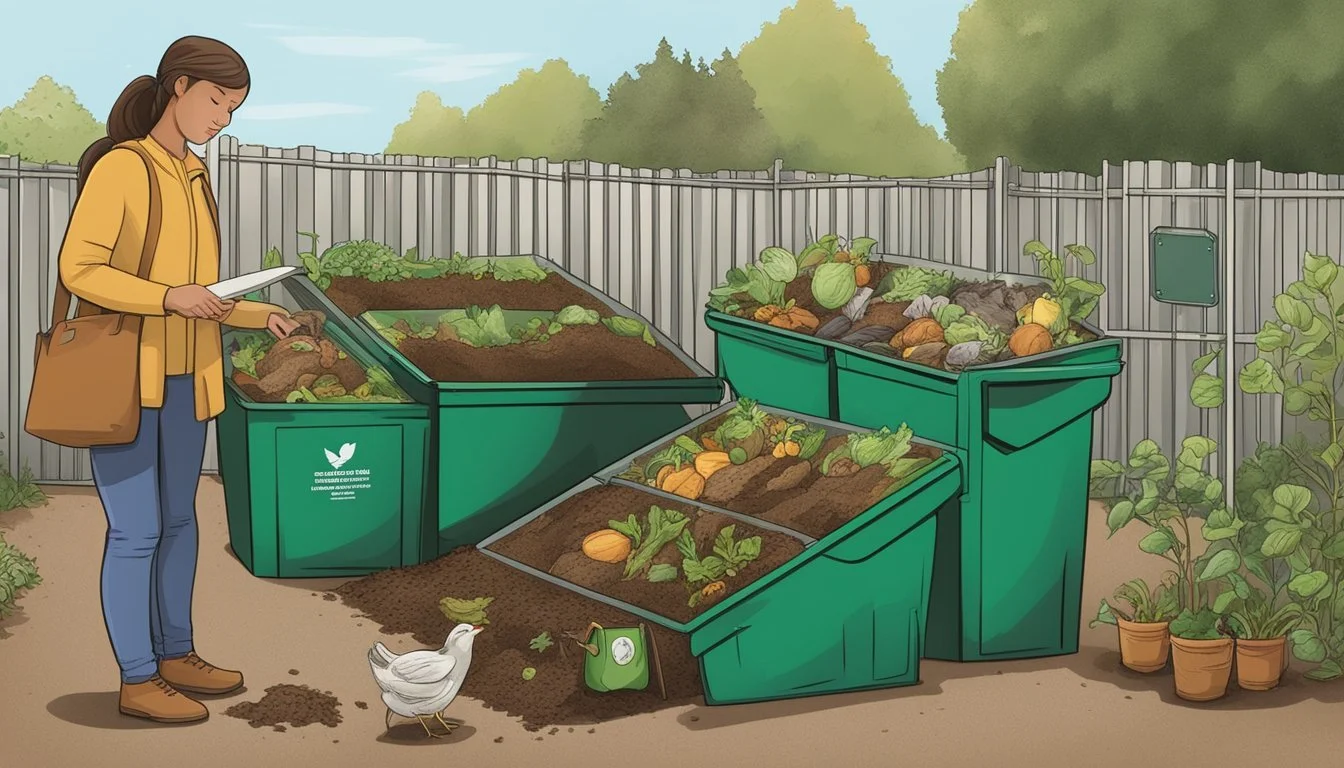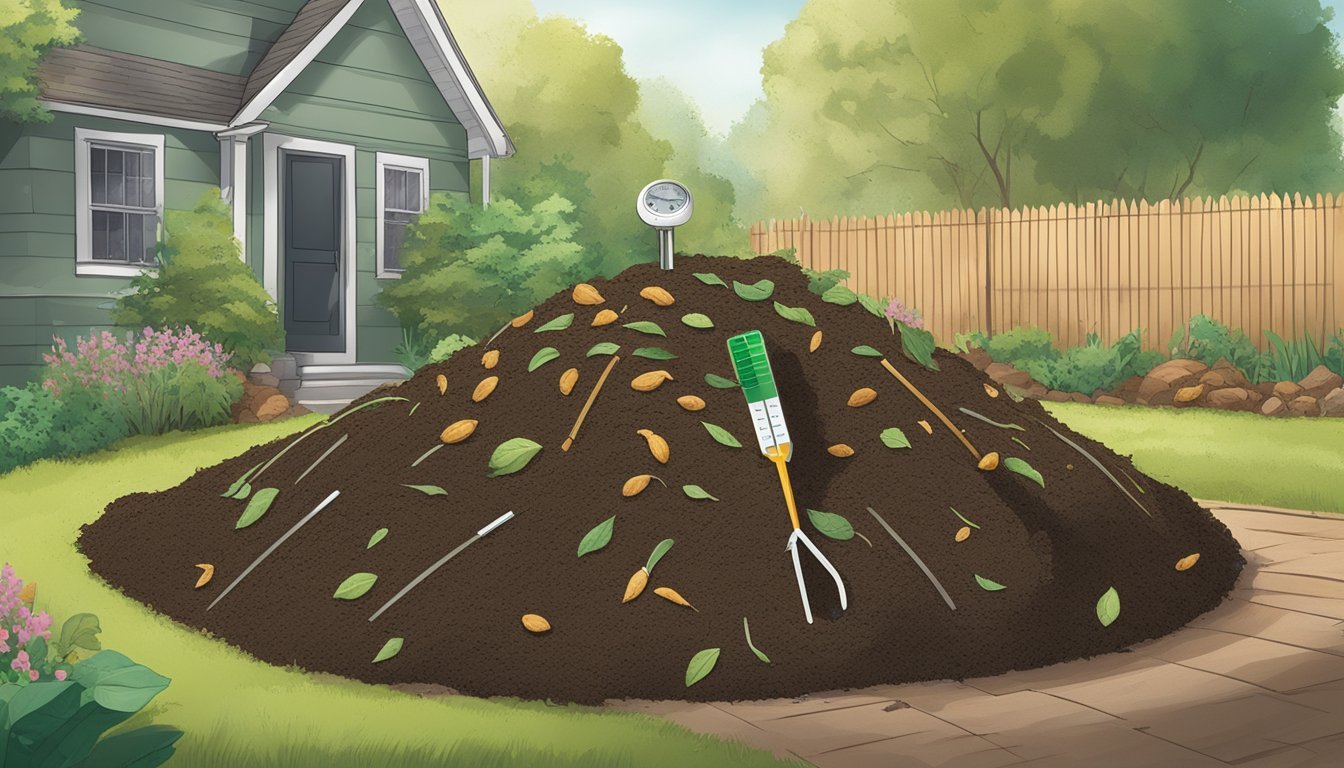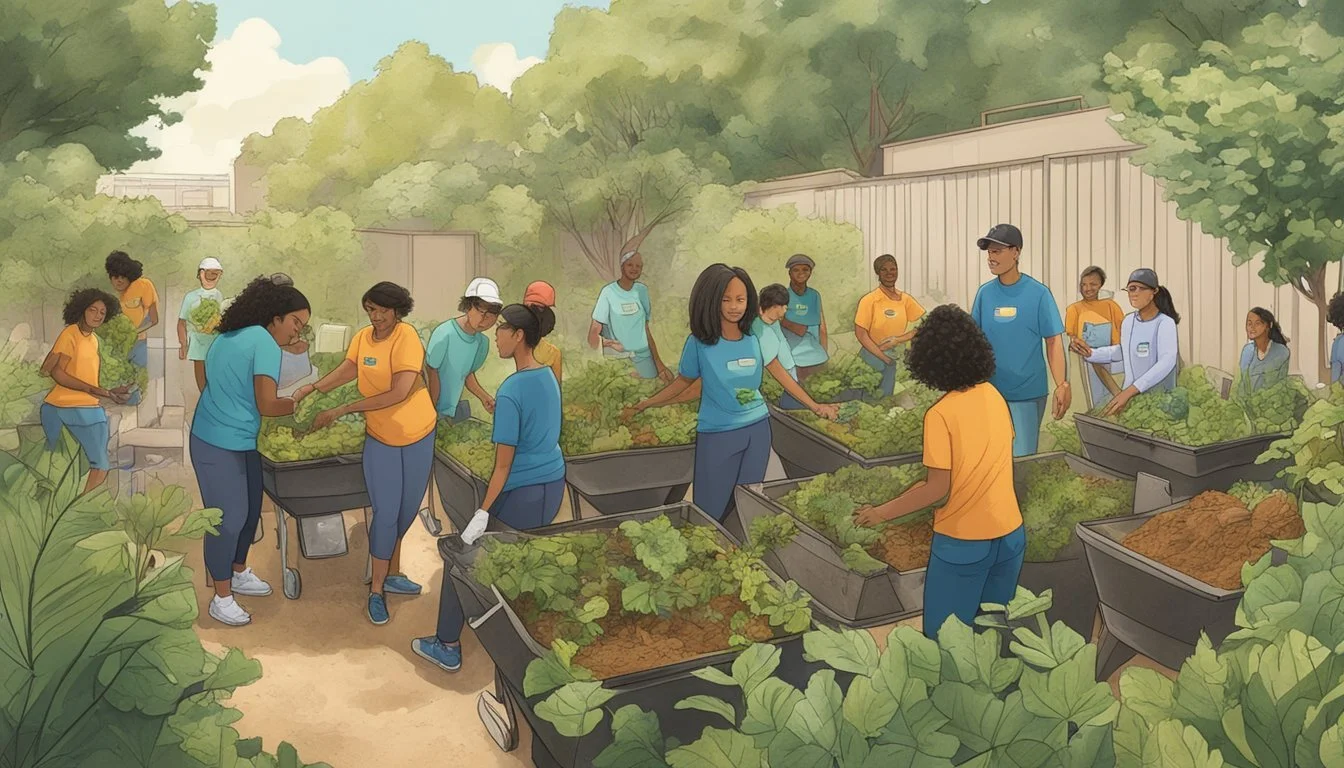Guide to Composting in Berkeley, CA
Essential Tips for Eco-Friendly Residents
Composting is an integral part of Berkeley, CA's approach to sustainability and waste management. Recognizing the impact of organic waste on climate change, the city has developed robust programs that not only encourage but facilitate community participation in composting. The efforts aim to reduce greenhouse gas emissions by diverting waste from landfills where it would otherwise decompose anaerobically, producing methane, a potent greenhouse gas.
The city of Berkeley offers resources and services that make it easier for residents to join the city-wide initiative. Free compost is available for Berkeley residents, which not only supports the community's gardening efforts but also closes the loop in the city's organic waste management system. This initiative reinforces the city's commitment to a greener, more sustainable environment where recycling and composting are seamlessly integrated into daily life.
Residents take part in an ongoing collaborative effort to mitigate the effects of climate change through localized actions. By nurturing a culture of recycling and composting, Berkeley sets an example for how individual and community practices can have a significant positive impact on the environment. The city’s unique approach to composting not only enriches the soil but also strengthens communal bonds, reflecting a shared dedication to environmental stewardship.
What Is Composting?
Composting is a natural process of recycling decomposed organic materials into a rich soil known as compost. This soil amendment is vital for maintaining healthy and fertile ground.
The Science of Composting
Composting is the aerobic decomposition of organic materials by microorganisms such as bacteria and fungi. The process requires a balanced mix of carbon-rich "brown" materials like dry leaves and nitrogen-rich "green" materials such as vegetable scraps. The addition of water facilitates the microbial activity, transforming the waste into humus, a nutrient-rich material.
Carbon provides energy for the microbes.
Nitrogen is crucial for building cell structure.
Ensuring the right balance of carbon to nitrogen, adequate moisture, and proper aeration results in efficient composting.
Benefits of Composting
Composting provides numerous benefits including:
Soil Enhancement: Compost improves soil structure, aiding in water retention and aeration.
Waste Reduction: By turning kitchen scraps and yard waste into compost, the volume of garbage sent to landfills is significantly decreased.
Recycling: Composting is a natural form of recycling that contributes to the circular economy, returning nutrients back to the earth.
The resultant compost can be used in gardens, landscaping, horticulture, and agriculture, leading to healthier plants and environment.
Understanding the Composting Process
Composting in Berkeley harnesses nature's process of recycling decomposed organic materials into a rich soil known as compost. It’s a crucial practice for waste management and soil health.
Stages of Decomposition
The breakdown of organic matter, such as yard waste and food scraps, occurs in several stages. Initially, microorganisms consume easily decomposable materials, generating heat and raising the temperature of the pile. This phase is called the mesophilic stage, which then shifts to the thermophilic stage as temperatures climb, effectively breaking down tougher materials. Finally, the maturation stage occurs as the compost cools, allowing for the development of beneficial organisms.
Balancing Greens and Browns
A successful compost requires a balance of nitrogen-rich materials, referred to as greens, and carbon-rich materials, known as browns. Greens include items like fruit and vegetable scraps, while browns consist of dried leaves, straw, and wood chips. An ideal carbon to nitrogen ratio (C) is approximately 30:1, wherein the carbon from browns helps to fuel the microorganisms, and the nitrogen from greens provides them with proteins.
The Role of Moisture and Aeration
Moisture and aeration are two pivotal elements in the composting process. The moisture level should be kept comparable to a wrung-out sponge to optimize microbial activity. Excessive water can create anaerobic conditions and produce carbon dioxide and methane, undesirable gases in the composting mix. Conversely, adequate oxygen is vital to support aerobic bacteria, which are efficient decomposers. Regularly turning the compost pile ensures aeration, which aids in controlling temperature and reducing the smell of decomposition.
Composting Methods and Techniques
When embarking on the journey of composting in Berkeley, one must consider the method that aligns with their goals, available space, and commitment level. Different techniques such as composting in a bin, directly on the ground, or employing worms each have unique requirements and benefits.
Backyard Composting
Backyard composting is the traditional approach where one accumulates organic waste like food scraps, yard trimmings, and manure in a compost bin or heap. This method is conducive to aerobic decomposition, meaning it requires the presence of air. A balanced mix of 'greens' such as kitchen scraps and 'browns' like sawdust or hay is pivotal for efficient breakdown. The pile should be turned regularly with a pitchfork or a compost aerator tool to maintain oxygen flow and speed up the decomposition process.
Hot Composting
The Berkeley Method—a type of Hot Composting—is renowned for its swift results. Hot composting involves maintaining a temperature between 135°F and 160°F, which accelerates the decomposition of organic materials, transforming food waste and yard trimmings into compost in as few as 14 to 18 days. Critical to this method is the frequent turning of the compost heap, which can be facilitated by covering it with a tarp to retain heat and moisture. The size of the pile also matters; it should be at least 3 feet high and wide to generate enough heat.
Vermicomposting
Vermicomposting employs worms, usually red wigglers, in a worm bin to break down organic waste. This method is suitable for those with limited outdoor space, such as apartment dwellers. Worms are efficient at converting food waste into nutrient-rich compost, or "worm castings." The optimal balance of food, moisture, and aeration must be maintained to keep the worms healthy. It's important to avoid meat and dairy products in vermicomposting to prevent odors and deter pests.
Materials Suitable for Composting
When composting in Berkeley, it is crucial to understand what materials are appropriate and which should be avoided. The right mix ensures a successful and efficient composting process.
What to Compost
Materials that can be composted include a variety of organic waste from your kitchen and garden. Here is a list of suitable materials:
Kitchen Waste:
Vegetable scraps
Fruit waste, such as rinds and peels
Coffee grounds, with or without the paper filter
Tea bags (make sure they are not made of synthetic fibers)
Garden Waste:
Grass clippings
Dry leaves
These materials are rich in nutrients and break down relatively quickly in the composting process, producing a rich organic fertilizer that benefits soil health.
Materials to Avoid
Certain materials should not be composted because they can attract pests, cause odors, and lead to diseases within the compost pile:
Meat and Dairy: These can attract pests and produce unpleasant odors.
Plastic: Non-biodegradable, it contaminates the compost.
Weed Seeds: Can spread weeds when the compost is used.
Contaminants: Anything toxic, chemically treated, or otherwise polluted should be strictly avoided.
It is important for the health of your compost and garden to exclude these materials from your compost bin.
Composting Regulations and Support in Berkeley
Berkeley, California, is known for its strong commitment to environmental sustainability, which is evident in its composting regulations and extensive community support systems.
City Composting Policies
The City of Berkeley has implemented comprehensive composting policies to support waste reduction goals, including the compliance with SB 1383, a statewide effort to reduce organic waste disposal. Residents are encouraged to use the green bins provided by the city for curbside compost collection. This year-round service aims to divert food scraps, yard waste, and other compostable materials from landfills, thereby helping Berkeley and California's Central Valley manage waste more sustainably.
StopWaste.org and Recology, the city's waste management partners, provide additional support and guidance, ensuring the community understands the importance of composting.
Community Composting Resources
Residents have access to a variety of resources to enhance their composting practices. Free high-quality compost is available for Berkeley residents at the Berkeley Marina—a program facilitated by the city to close the loop on organic waste. By redistributing compost back to the community, the City of Berkeley reinforces the circular economy and promotes soil health in residential gardens.
For those seeking to participate in composting but lack space at home, community gardens and composting hubs established across the city offer an accessible alternative. Education and outreach are integral to the initiative, with online platforms like CalRecycle providing in-depth information and tips for effective composting.
Maintaining a Healthy Compost Pile
A successful compost pile requires diligent monitoring and quick response to potential issues. Maintaining the right balance of elements and conditions is the cornerstone of producing rich, beneficial compost.
Monitoring Compost Health
To ensure your compost pile remains healthy, regulary check for adequate aeration and moisture levels. A pile should be moist but not soggy, with the consistency of a wrung-out sponge. Use a pitchfork or a compost turner to introduce oxygen, which is crucial for facilitating the breakdown of organic waste by aerobic microbes. Temperature is a reliable indicator of microbial activity; a healthy compost pile often exhibits temperatures between 130-160°F. The thermophilic phase where these temperatures are present is vital for breaking down material quickly and can even kill pathogens like Salmonella.
Monitoring also involves checking the Carbon-Nitrogen Ratio (C Ratio), aiming for a balance of 30:1. Brown materials like dried leaves add carbon, while green materials like kitchen scraps add nitrogen. Keeping this ratio in check helps to avoid unpleasant odors and facilitates a faster decomposition process.
Troubleshooting Common Issues
Size of the compost pile matters; it should be no smaller than 3 feet high and wide to retain necessary heat. If the compost is too wet, this can lead to anaerobic conditions, causing foul odors. Conversely, excessively dry compost piles slow down the composting process.
Excess Moisture: Add brown materials to absorb the water and turn the pile for better aeration.
Dryness: Moisten the pile and check that it's covered to retain water.
Pests and rodents are attracted to certain materials in compost bins. To deter them, avoid composting meat, dairy, and fatty foods, and ensure the compost bin has a secure lid or cover. If odors are problematic, review the C ratio as imbalances often cause ammonia (too much nitrogen) or a sour smell (too much carbon).
Aeration, temperature, and moisture levels should be adjusted when troubleshooting. A pile that is not heating up needs more nitrogen, while a pile that is too soggy needs more carbon. Use a pitchfork to turn the materials, which helps to integrate the pile and restart the heating process.
Utilizing Finished Compost
Once finished compost is ready, its utilization plays a critical role in enhancing soil health and reducing landfill waste. This nutrient-rich product can be applied in various settings, from home gardens to larger agricultural landscapes.
Applications of Compost
Finished compost serves as a soil amendment, improving soil structure, water retention, and aeration. Gardeners and farmers alike incorporate compost into the soil to enrich it before planting. By doing so, they create a fertile environment for plants to thrive, which is especially beneficial for growth-hungry crops and ornamental plants. Moreover, when applied to farms, compost increases the organic matter in the soil, thus supporting sustainable agriculture practices.
Gardening applications include:
Mixing with potting soil for container gardens
Mulching around trees and shrubs
Creating a compost tea for use as a liquid fertilizer
For farms, compost is often spread over fields before the growing season as a form of low-impact, natural fertilizer that can decrease dependency on chemical alternatives.
Quality of Finished Compost
The quality of finished compost is paramount to its effectiveness. Good compost should be dark, crumbly, and have a pleasant, earthy odor. It should be free of any visible plant debris and weed seeds to avoid introducing them into new environments. To determine if compost is ready for use, a simple test involves measuring the temperature of the compost pile which should be near ambient.
Indicators of quality compost include:
Texture: Rich and crumbly
Smell: Earthy, not sour or putrid
Color: Dark brown, resembling topsoil
Temperature: Similar to the surrounding air temperature
Utilizing finished compost not only aids soil health in gardens and farms but also plays a significant part in reducing the volume of organic waste destined for landfills. When organic material is composted instead of being thrown away, it turns a potential waste issue into an opportunity for environmental enhancement.
Educational and Volunteer Opportunities
Berkeley offers a wealth of opportunities for residents to expand their knowledge on composting and engage with the community through volunteering. These programs emphasize hands-on learning and practical experience in composting education.
Workshops and Training
Berkeley provides a variety of workshops aimed at educating residents about the benefits and methods of composting. At the SERC Berkeley campus, individuals can attend vermicomposting workshops, where they learn how to recycle organic waste using earthworms. These workshops are invaluable for those looking to start composting at home or contribute to community composting efforts. Additionally, the City of Berkeley offers free compost to residents, supporting local gardening and composting initiatives.
Volunteering in the Community
Volunteering opportunities are abundant for those who wish to contribute to Berkeley's zero-waste goals. Community gardens often seek volunteers to assist with composting and educate others on the importance of reuse. The Berkeley Community Gardening Collective is one such group where residents can volunteer their time, learning about and promoting composting, gardening, and nutrition. Volunteering also extends to programs like CompostGal, which involve activities like rainwater catchment and creek restoration, offering hands-on experience in sustainable practices.
Getting Started with Home Composting
Berkeley residents embarking on home composting can transform their kitchen scraps and green waste into valuable garden soil amendments. The initial steps involve selecting the right compost bin and finding the ideal location for your compost setup.
Choosing a Compost Bin
Selecting an appropriate compost bin is essential for managing organic waste efficiently. Residents can choose from multiple styles:
Tumbler bins: Great for quick composting and ease of turning.
Stationary bins: Ideal for a set-it-and-forget-it approach.
Open bins: Best for those who prefer a hands-on approach and have larger garden areas.
Purchasing bins endorsed by the City of Berkeley may come with the advantage of community support or discount programs. Otherwise, home composting enthusiasts can conveniently construct their own using repurposed materials.
Setting Up Your Compost Area
Once a bin is acquired, you'll need to set up your compost area. The right spot should:
Be easily accessible year-round.
Have a balance of shade and sun; too much sun accelerates water evaporation, and too much shade may slow down the composting process.
Enable proper drainage to prevent waterlogging.
Home composters should also establish a system for sorting their materials. Food scraps like vegetable peelings, fruit waste, and coffee grounds are considered green waste and should be mixed with dry, brown materials such as leaves and shredded newspaper to optimize the composting process. Regular maintenance, including turning the compost and managing moisture levels, ensures efficient breakdown within the Berkeley Method's 14-21 day timeframe.







